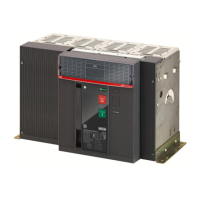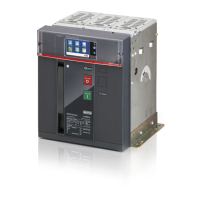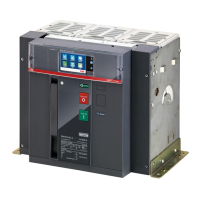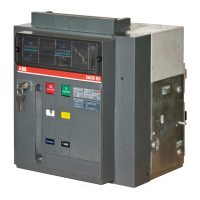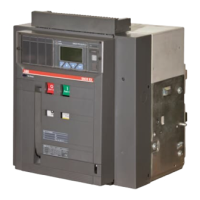ABB | SACE Emax 2
140 | © 2013 ABB | 1SDH001000R0002 - L7804
Ekip Touch protection release | 16 - Hi-Touch measurements
Continued from the previous page
Slow voltage increases
The slow voltage increase is the rise of any phase-to-phase voltage above one of the set
thresholds, for a duration greater than the set time.
The corresponding alarm counter is called Swells.
Parameters that can be set for the check are:
Parameter Description
Swell Threshold
(First Class)
Defines the first alarm threshold.
It is expressed as % Vn.
Swell Time (First
Class)
In the event of rising above the first alarm threshold, it defines the
time beyond which the alarm counter is increased.
Swell Threshold
(Second Class)
It defines the second alarm threshold.
It is expressed as % Vn.
Swell Time (Second
Class)
In the event of rising above the second alarm threshold, it defines
the time beyond which the alarm counter is increased.
IMPORTANT: in order to intercept all the raised voltage events (both slow and
short duration), it is recommended to set:
• Swell Threshold (First Class) = Spike threshold.
• Swell Time (First Class) = 40ms.
Imbalance between the voltages
In a three-phase system, imbalance occurs when the phase or concatenated amplitudes are
different, or when the phase angles differ from balanced conditions (or both these conditions).
The phase shifting is calculated considering the positive and negative sequences of the three-
phase system.
The phase shifting threshold is expressed in %, in which a value equal to 0% corresponds to
a balanced three-phase system.
The corresponding alarm counter is called Voltage unbalance.
Harmonic distortion
The Harmonic Distortion check regards phase-to-phase voltages and the phase currents, and
is of two types:
• If the total distortion is higher than the set value, the alarm counter is incremented THD.
• If the individual harmonic components (different from the fundamental) have higher amplitude
than the set value, the alarm counter is incremented Harm.
NOTE: to allow checking of Harmonic Distortion, you need to enable the calculation
of the harmonics through the Harmonic parameter, available in the Measurements
menu.
Parameters that can be set for the check are:
Parameter Description
Voltage THD
Threshold
Defines the alarm threshold for the total distortion of the voltages.
It is expressed as a %.
Current THD
Threshold
Defines the alarm threshold for the total distortion of the currents.
It is expressed as a %.
Individual voltage
harmonic threshold
Defines the alarm threshold for the individual harmonics of the
voltages.
It is expressed as a %.
Individual current
harmonic threshold
Defines the alarm threshold for the individual harmonics of the
currents.
It is expressed as a %.

